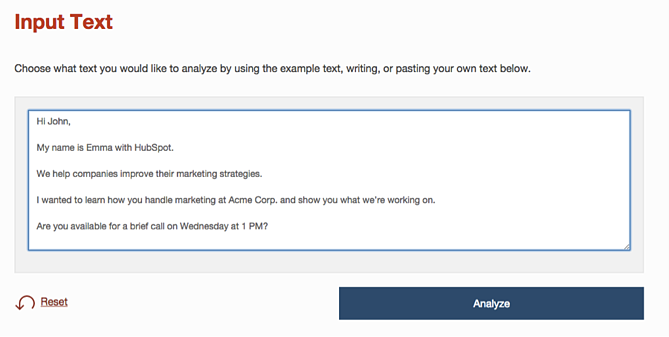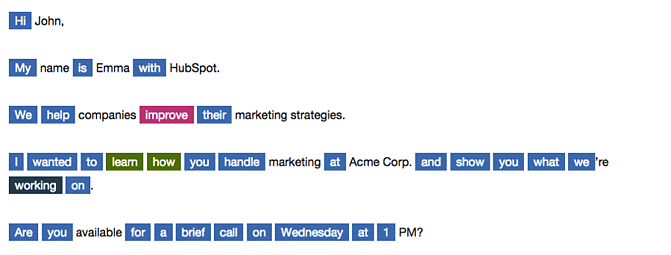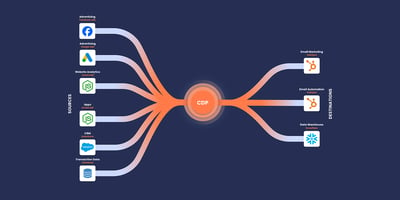This means that every interaction a sales rep has with a buyer should invoke some type of emotion. If you're selling a service that protects businesses from risk, you'll want to drum up feelings of security and calm. On the other hand, if your product aims to grow profits exponentially, you'll probably want to inspire excitement and happiness.
But how do you know for sure what mood you're creating? Word choice is paramount in sales; however, reps often don't give a second thought to writing sales emails, or mass sending a bland template. You might have conveyed the feeling you were trying to inspire ... but then again, you might have conjured up the complete opposite.
To get a sense of how your messaging is coming off to prospects, run your emails through Tone Analyzer. The free tool will dissect your message and return a series of scores for different types of emotions and an overall tone rating.
Here's an example using a common sales email template:

After clicking "analyze," a scorecard pops up:

According to the tool, my email is written in an overwhelmingly social tone. The message comes off as open, agreeable, and conscientious.
What specific words contributed to this outcome? The tool also breaks your message down and color-coded words based on their emotional inflection.

Clicking on a word will bring up a list of synonyms for the writer to consider, divided into different emotional categories. While the synonyms are far from perfect (some are outright unusable), it's at least food for thought.
Note that the combination of emotions that this example email brings forth might be great for some scenarios. But for others, it could come off as a real yawner. Remember that inserting "negative," "angry," "analytical," or "tentative" tones into your messaging could be just what the doctor ordered (as long as you're not scaring or antagonizing your recipient). Play around with your wording and analyze drafts in the tool to achieve the desired result.
The emotional tone of your sales email could make the difference between radio silence and a reply. So before you press "send" on your next prospecting email, consider running it through the Tone Analyzer to find out if you stand a better chance of rousing your buyer into action ... or putting them to sleep.
To learn more about how the analyzer works, check out the documentation page.
The tone isn't the only thing that matters in emails -- use the BRIEF method from HubSpot to write messages your prospects will actually want to read.
About the author
Emma Brudner
LinkedIn: https://www.linkedin.com/in/emmajbrudner/
Emma was one of the recipients of HubSpot's inaugural Great Manager Award, recognizing the top 10% of the manager population during her stay at HubSpot. Now she is a Director of People Operations at Lola.com. Lola.com is best known for developing corporate travel management and expense software for web browsers.





